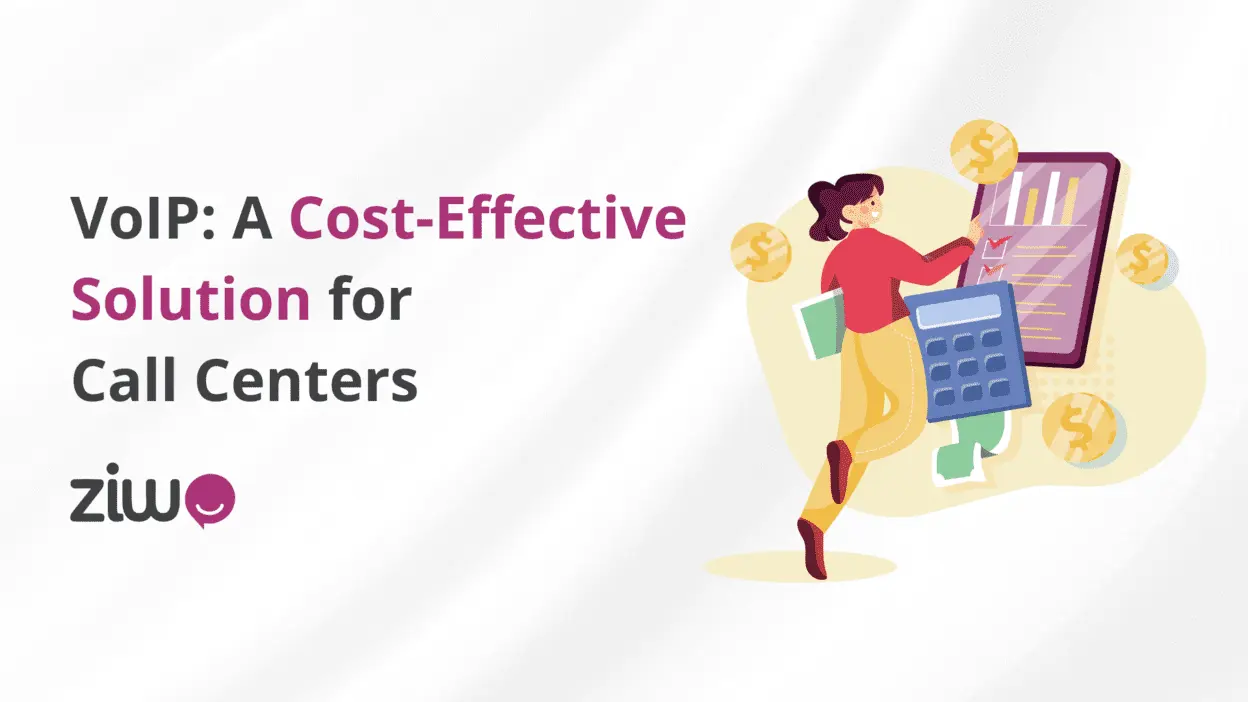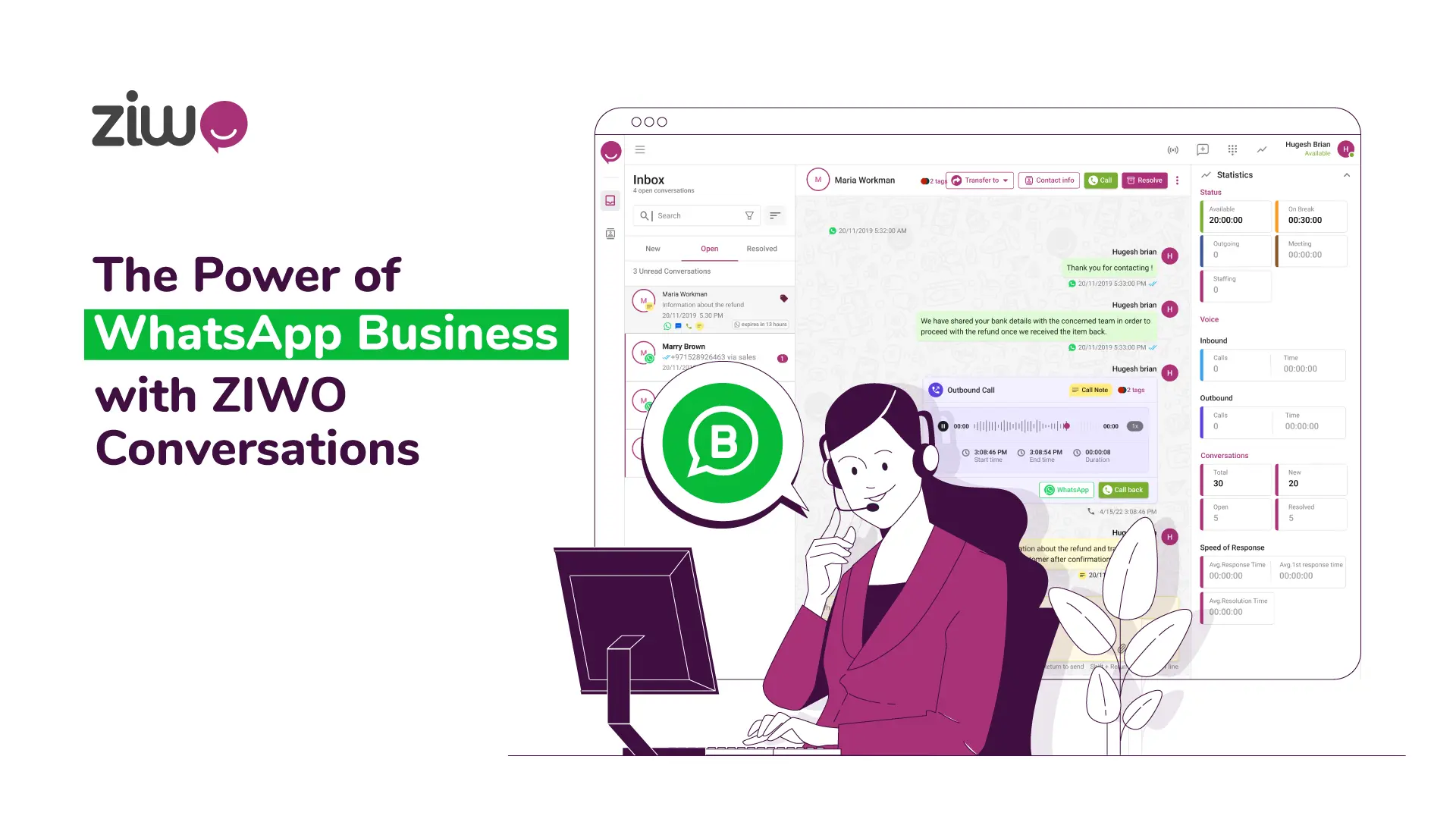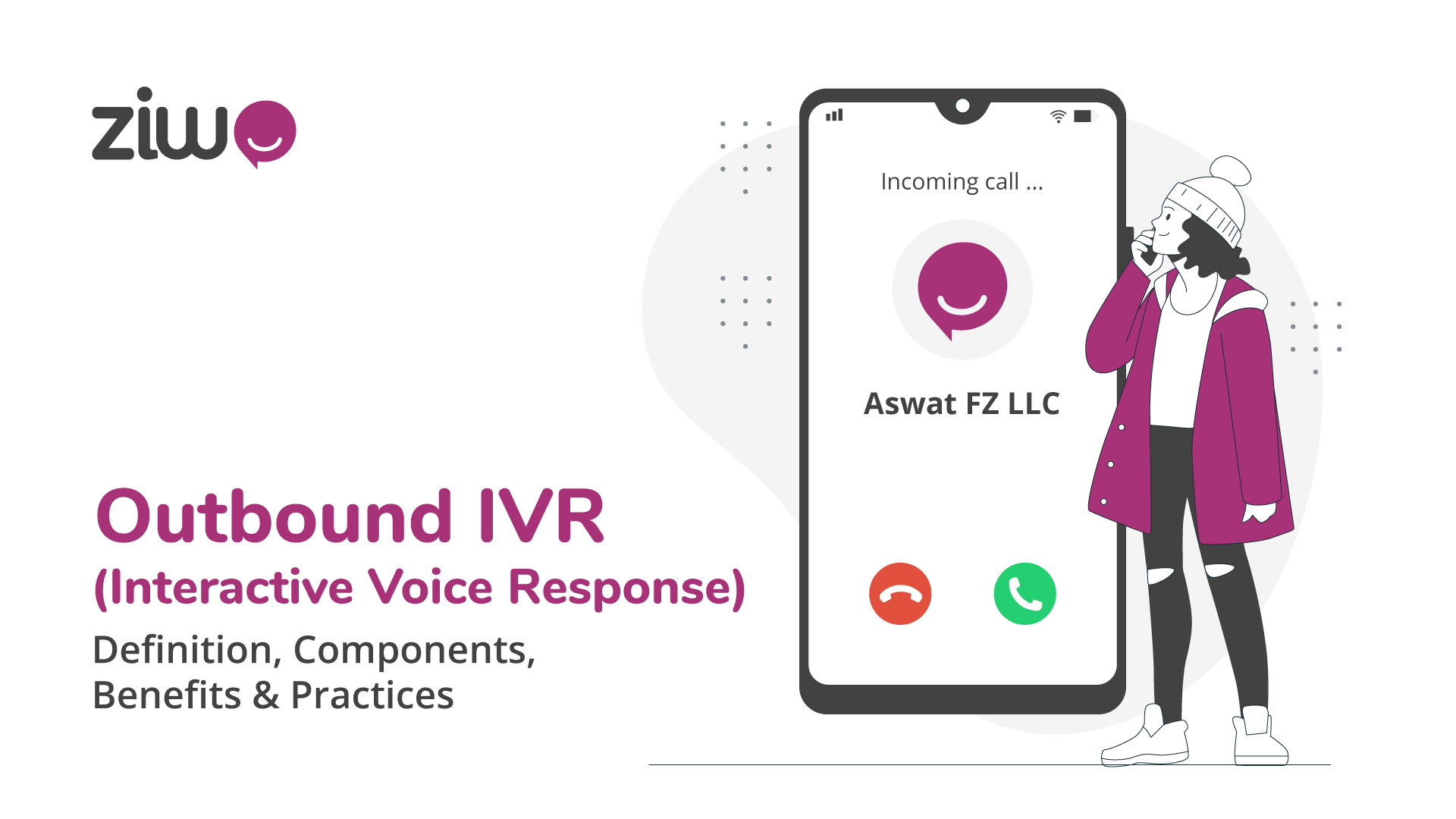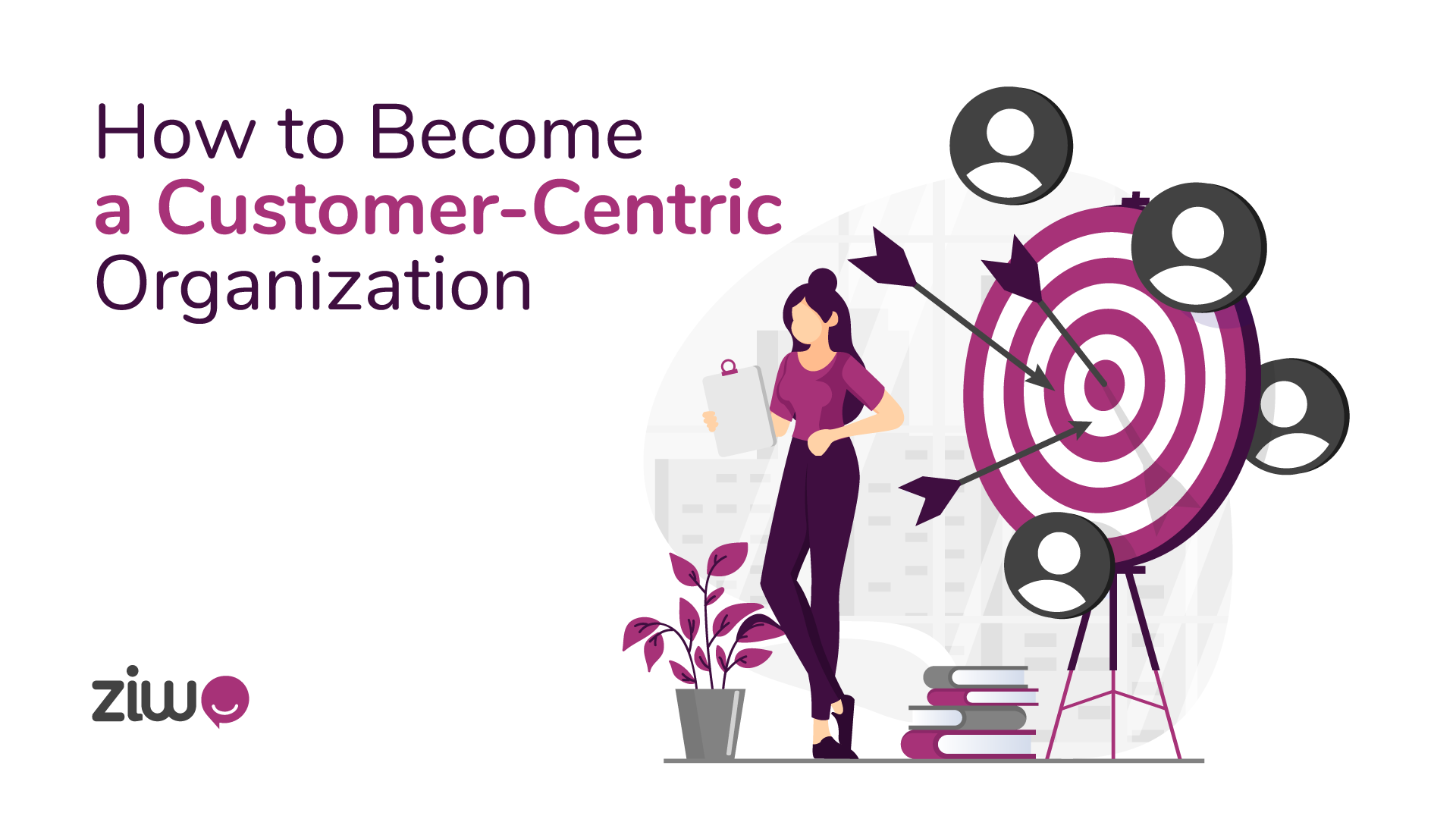
Why is VoIP a cost-effective communication solution for call centers?
Cost-effectiveness is one the possible reasons that still make Voice over Internet Protocol (VoIP) technology appropriate for cloud call centers considering lowered infrastructure costs, call rates, scalability, consolidated communication tools remote work support, and such, overall savings and efficiency are achieved by it.
Introduction to VoIP in call centers
With the advent of VOIP (Voice over IP) technology, call center communication has been transformed by voice calls transmitted via the Internet instead of traditional telephone lines, highlighting how the integration of VoIP changed call center communication.
VoIP was the catalyst that has brought about a shift in the way a call center works providing numerous benefits like cost-effective solutions, more flexibility and availability, scalability, and rich features.
VoIP assists call centers with various options like simplifying operations, raising customer service to a whole new level, and coping with commutation changes in the modern digital era.
The cost-effectiveness of VoIP explained
VoIP in call centers includes virtual phone lines along with computing gear, touching a very small amount of infrastructure costs. Furthermore, dispatches over the VoIP network usually entail lower per-minute rates which traditional phone lines do not, so the costs of communication will be reduced.
In addition, the built-in scalability feature of VoIP systems is highly advantageous as call centers can be minus the extra cost of additional lines and extensions without loopholes for a significant upgrade in terms of infrastructure. Basically, by integrating VoIP in the call center you are saving money, continuing to scale your business, and also improving the communication experience.
Lower operational costs
Call centers, as a result, benefit from using VoIP technology, as it cuts costs related to the use of outdated landline systems and their hardware. Moreover, the point that minutes of the VoIP calls are usually way below the rates of traditional landlines, so firms can witness that as a reduced communication expense.
This cost-effectiveness benefit not only makes the call centers spend money efficiently but also gives them the excess resources to invest in other key aspects of their operations.
Reduced hardware investment
Reduced hardware investment is a key advantage of VoIP technology, as it eliminates the need for expensive traditional phone systems and associated equipment. With VoIP, businesses can leverage their existing internet infrastructure and use software-based solutions to handle calls, reducing upfront costs and ongoing maintenance expenses.
This cost-effective approach allows organizations to allocate resources more efficiently and invest in other areas of their operations, ultimately driving greater productivity and profitability.
Scalability and flexibility
Although the call center has been the victim of the plague of climate change, the spread of Internet access has given hope to the call center industry owners.
In addition to this, VoIP systems are very flexible to the growth of call volumes and the day-to-day needs of the business due to their ability to increase or decrease the calling capabilities without major changes in software or infrastructure.
Also, VoIP makes changing remote work environments and providing necessary work tools for agents that work wherever they have an internet connection possible. The scale and adaptability that call centers embrace help in optimizing the use of resources, improving efficiency, and delivering the best customer just shrinking costs and increasing business nimbleness.
VoIP's impact on call center operations
VoIP has revolutionized call centers through the provision of low-cost, scalable, and flexible communication solutions, a transformation not without its challenges, as detailed in our exploration of what challenges arise with VoIP implementation in call centers and how to solve them, which have in turn resulted in improved productivity among the call centers, enhanced customer satisfaction, and increased organization's profits.
Enhanced communication features
VoIP platform brings robust communication features such as call routing, call forwarding, voicemail transcription through email, and integration with other channels like email and chat, significantly improving customer interaction. They simplify the message transmission, increase availability, and might even provide personalized user-specific interactions which improves the final customer experience, in general.
Integration with other business tools
On top of that, VoIP displays excellent operation via integration with CRM and communication systems, helpdesk software, and collaboration platforms.
For this blending of two channels not only improves productivity but call center workers can access the relevant customer data, which in turn helps to streamline the workflows and to cooperate more effectively, finally, which is the improved level and satisfaction of customer service.
The Role of VoIP in Remote Work and Global Connectivity
The remote job vacancy is put into gear by VoIP, and global connectivity is seen. Thanks to VoIP technology employees can be able to make as well as receive calls, participate in meetings, and also collaborate with colleagues who are from all over the world across the globe but through exploitation by use of an internet connection.
This agility provides enterprises with the ability to employ remote workers, hire people from the coasts of the globe, and expand the business beyond the boundaries of the physical location of the company.
Not only does VoIP straighten international calling out but also it makes it possible for businesses to communicate with their clients, partners, and customers who are in a different place. Bridging the gaps in workforce mobility, fostering collaboration, and driving global connectivity are the key benefits that VoIP brings to the present-day digital office space.
Supporting a distributed workforce
The VoIP Device benefits a distributed workforce with its wide variety of communication tools that are available from any computer network connected to the internet.
The capability of working from home gives employees a lot of space to enable them to work without monitoring and inspiring them to collaborate with other members of the team located in remote locations.
Bridging the gap for international communication
Traditional telephony falls short when it comes to global conversations and to rationalize costs and enhance efficiencies, VoIP is used to link with peers, customers, and partners that are distant from you.
Through the utilization of VoIP technology, companies can now make international calls at a discount compared to the costs of traditional phone systems. This is possible because the communication will become less expensive.
Also, video conferencing, instant messaging, and file sharing are among the top features of virtual collaborative tools that work effectively regardless of distance and location. Therefore, the establishment of the network enables efficient communication, enhances international cooperation, and leads to more markets on the global level.
In general, VoIP stands as an important cutting-edge development that has become a vital tool in tearing down geographic barriers and providing a free flow of communication across borders.
Comparing VoIP with traditional telephony
Voice over IP or VOIP provides cheaper calling, scalability, and superior amenities in contrast to traditional telecommunications.
While traditional wired telephony services depend on dedicated and physical line infrastructure and may be perceived as more reliable the decision to choose VoIP for businesses enables flexibility and remote utility that makes it ideal for modern businesses and work environments.
Cost Comparison
As for costs, VoIP usually has lower calling rates and pays particular attention to the distance and phone calls, that is long-distance and other international calls, compared to traditional telephony.
On the other hand, VoIP technology helps to avoid major capital expenditure that is usually associated with conventional telephone system equipment and the accompanying network structures, which represents a substantial business cost reduction. In sum, VoIP is more cost-saving than traditional voice technology.
Feature set comparison
While the cutting-edge feature set is bigger in VoIP than in traditional telephony, VoIP is less expensive and simpler to use. Most VoIP systems have functions like call forwarding, email transcription to Unstructured supplementary service Data (USSD), video conferencing, instant messaging, and integration with other communication channels, such as email and chat. These capabilities help to make better productivity, collaborate, and deliver customer service at the next level for a business.
On the one hand, however, normal telephone systems are featured with basic calling features like call waiting and caller ID, but they are no match to the advanced functionalities of VoIP with which flexibility is also a key asset.
Above all, VoIP has the biggest advantage which means the superior set of options that is capable of covering up all the communication needs of modern companies from a general communications point of view.
Future trends: VoIP in the evolving call center landscape
Shortly VoIP will be ahead of the changes in the call center sector. VoIP technology is undoubtedly an important tool that is designed to improve both effectiveness and a customer`s experience.
Potential future trends could be more smart use of AI for automation and advanced analytics will be possible, cloud technology will give more omnichannel communication capabilities, and their platforms will be seamlessly integrated into CRM systems and other business tools.
These developments will make the call centers so agile as to be able to meet any changes in customer tastes, increase behind-the-scenes efficiency, and create a perfect environment of customer service.
Technological advancements and VoIP
Continuous technological change is the major force in evolving VoIP today, which determines the functional scope of automation, security, 5G integration, cloud-based solutions, and IoT integration.
With these progressions, it becomes easier for this system to provide the efficient, reliable, and flexible communication channels that make it the pioneer in the modern telephony arena.
Predictions for future cost savings
Technology development perspectives towards tomorrow's cost saving for Voice over Internet Services (VoIP) are inspiring because they are supported by the intensification of competition among service providers, the performance of more efficient IT infrastructure and operations, economies of scale which allow businesses to pay only for what they use, and integration of workflows which eliminates unnecessary administration.
The estimated bottom line savings for the businesses that install or switch to VoIP solutions are likely to remain the same or even drop as the technology continues to develop within the telecommunications industry.
Readings
Latest News
Interviews, tips, guides, industry best practices, and news.

Strategies for a Productive First Contact with Clients
Take time to focus on the First Contact with Clients, so you can adjust the customer experience (CX) strategy to provide the best service.
Read post
The Power of WhatsApp Business with ZIWO Conversations
ZIWO Conversations is recognized as the premier WhatsApp Business Companion, elevating both customer experiences and team collaboration to a higher standard.
Read post
Pause and Resume Call Recording – Benefits & Industries
agents can manually pause and resume call recordings, Once an administrator has enabled the feature, agents will see a button on the dialpad
Read post
Outbound IVR (Interactive Voice Response) – Definition, Components, Benefits & Practices
Outbound IVR feature is a contact center tool that is used to proactively distribute communications to customers with a predefined IVR menu.
Read post
How to Become a Customer-Centric Organization
Ways to Build a customer-centric culture in your company, customer-centricity needs to be part of your philosophy, values, and mission daily.
Read post
Multilingual Contact Centers: Bridging Language Gaps
Discover how multilingual contact centers overcome language barriers to deliver outstanding assistance, thereby elevating customer experience
Read post



